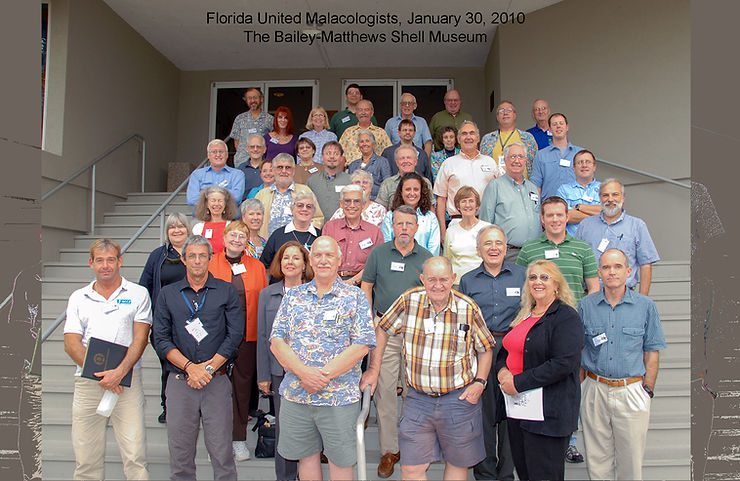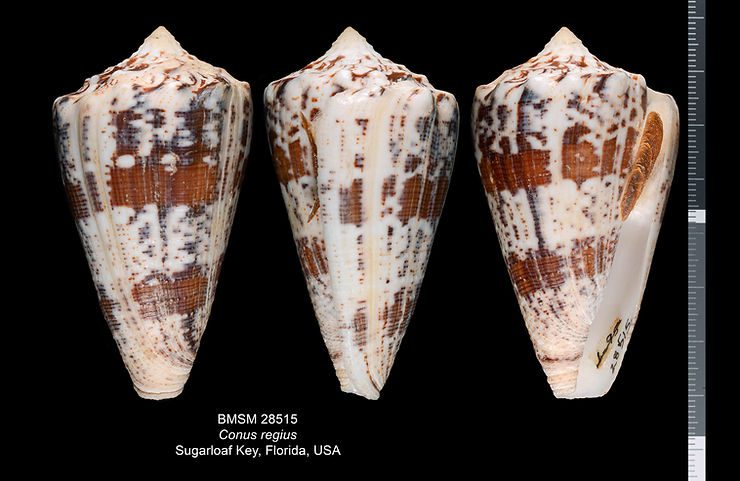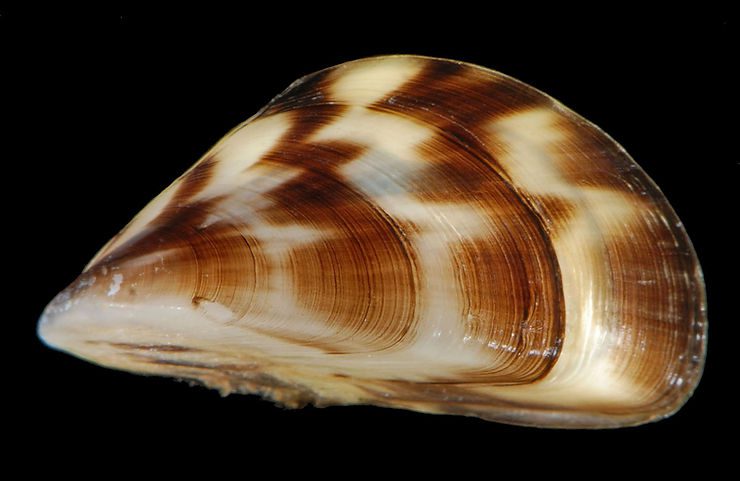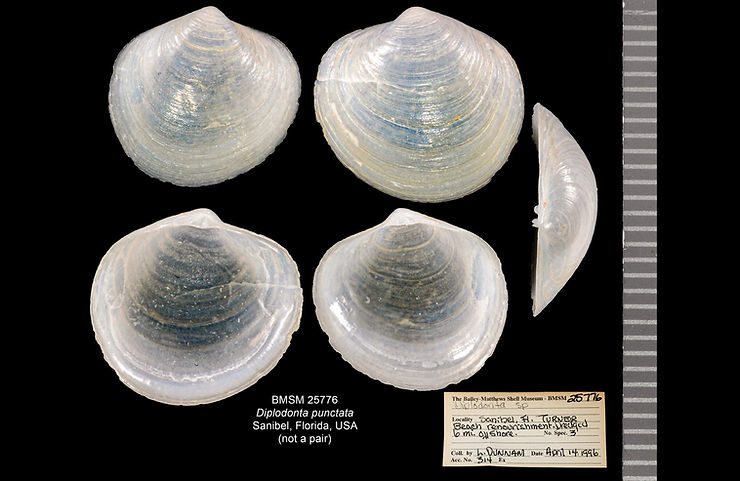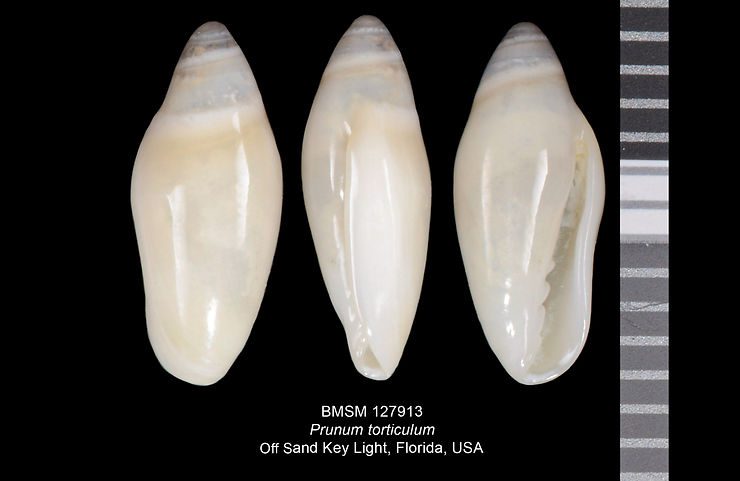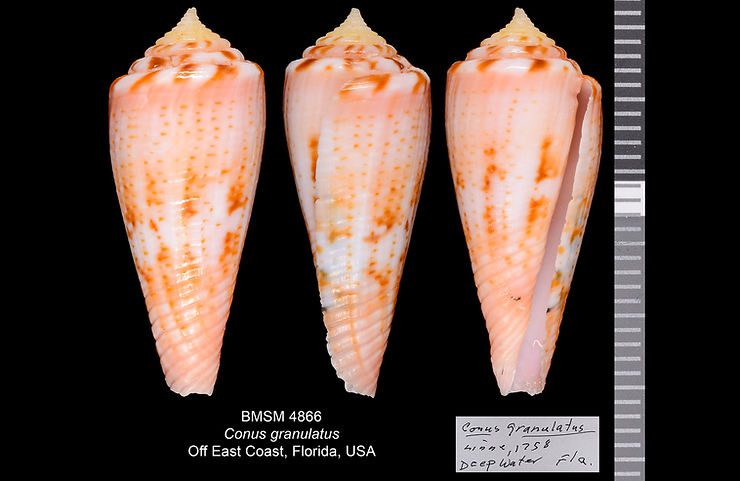
Shell of the Week: The Glory of the Atlantic Cone
Conus granulatus is an attractive cone snail that grows up to at least 64 mm (about 2.5 inches). Its shell shows spiral ridges that may or not bear granular bumps (hence the scientific name of the species). The background color is orange-red with one or more broad spiral brown bands, with variations in intensity of these colors. The species is found throughout the Caribbean Sea, including the Bahamas, and off the east coast of Florida and the Florida Keys.#conusgranulatus #gloryoftheatlanticcone

